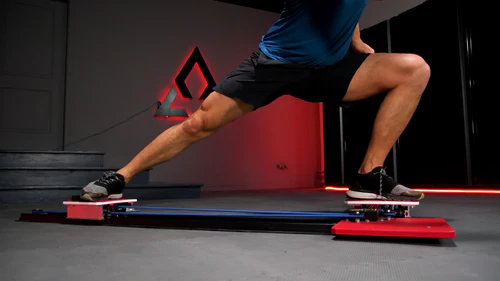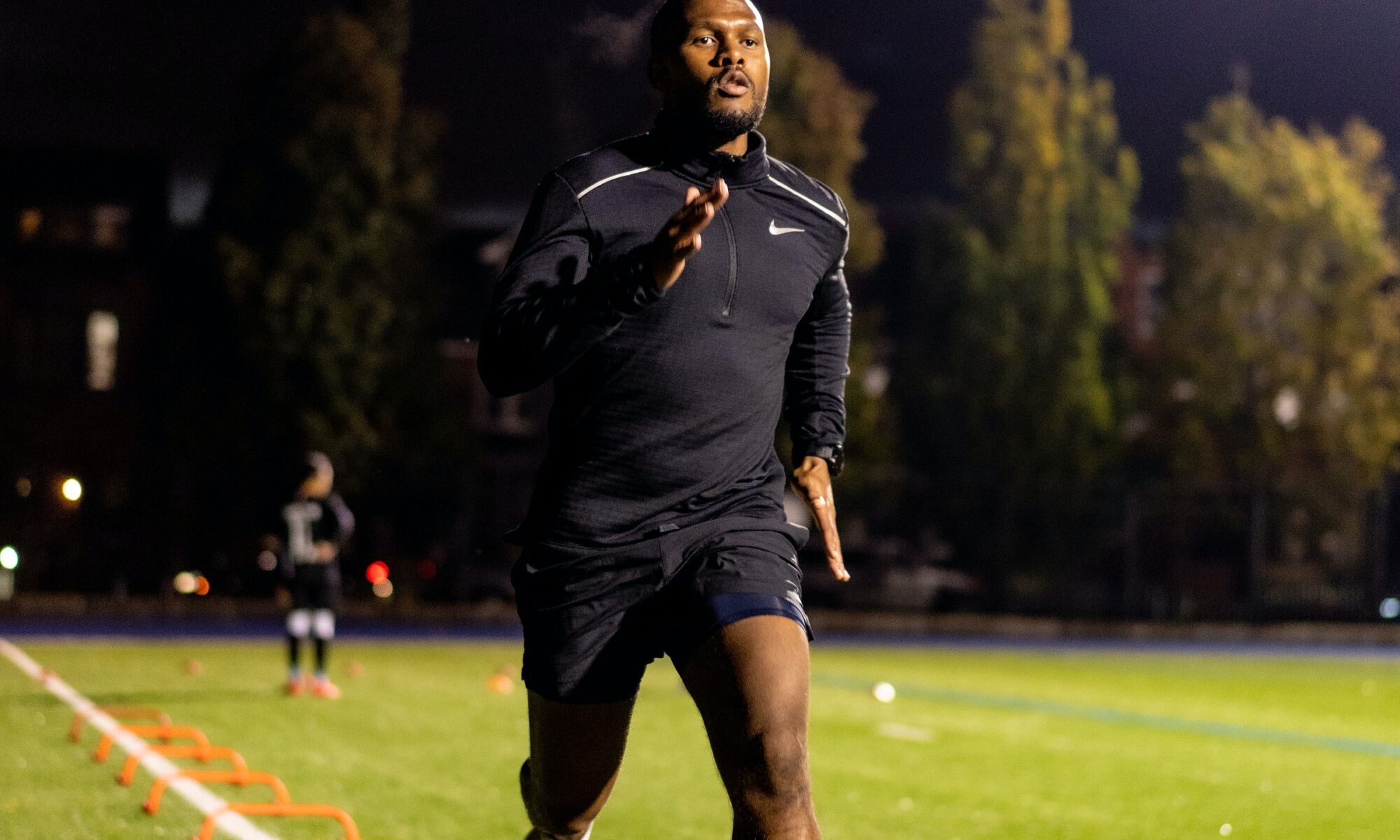Are you an ice hockey player looking to improve your skating performance without taking up valuable ice time? If so, you’re in luck! It is possible to enhance your skating performance without stepping foot on the ice. With some agility and quick sprint drills, you can take your skating to the next level. In this blog post, we’ll share our secrets on how to become a faster, more agile skater without relying solely on ice time.
Importance of off-ice training for skating performance
Skating is a physically demanding sport that requires speed, power, balance, and agility. While power skating lessons are a great way to improve your technique and efficiency on the ice, they are not always accessible or affordable for everyone. Fortunately, there are many techniques and exercises you can do off the ice to enhance your skating performance.
One of the most important aspects of off-ice training for skating is building strength and endurance in your legs. This can be done through a variety of exercises, including plyometrics, track training, and quick starts. Plyometric exercises, such as jump squats and box jumps, are great for building explosive power and improving your stride length. Track training involves sprinting and running drills that can improve your speed and endurance. Quickstarts are also beneficial for developing the explosiveness needed for skating starts and stop.
Another key component of off-ice training for skating is improving your balance and agility. Agility drills, such as cone drills and ladder drills, can help you develop the coordination and quick footwork needed for skating. It is also important to focus on proper form and technique when doing these exercises, as this will help you transfer these skills to the ice.
Proper nutrition and hydration are also crucial for optimal skating performance. Make sure you are fueling your body with the nutrients it needs to perform at its best. This includes eating a balanced diet that is rich in protein, carbohydrates, and healthy fats, as well as staying hydrated by drinking plenty of water.
Using video analysis to improve your technique can also be a useful tool for off-ice training. Recording yourself skating and analyzing your form can help you identify areas that need improvement and make adjustments accordingly.
Finally, there are other off-ice training options, such as rollerblading and dryland training, that can help you improve your skating skills. Rollerblading can be a great way to practice skating movements off the ice, while dryland training can be tailored to specific skating skills and techniques.
Overall, off-ice training is a crucial component of becoming a quick and efficient skater. By incorporating a variety of exercises and techniques into your training regimen, you can improve your strength, speed, agility, and balance, and ultimately become a better skater.

Techniques for improving stride off the ice
1. Resistance band exercises: Resistance bands can be used to target specific muscle groups that are used in skating. Place a band around your ankles and walk forward, sideways, and backward to strengthen the muscles in your hips, glutes, and quads. This will help improve your stride and power.
2. Treadmill workouts: A treadmill is a great tool for skaters to work on their stride. Set the treadmill to a high incline and practice walking or running with an exaggerated stride. This will help improve the length and power of your stride.
3. Hurdle drills: Hurdle drills are an excellent way to work on hip flexibility, stride length, and agility. Set up a series of hurdles and practice jumping over them with both feet and one foot at a time. This will help improve your stride and coordination.
4. Plyometric exercises: Plyometric exercises are great for building explosive power, which is important for skating. Squat jumps, box jumps, and jumping lunges are all great plyometric exercises that can help improve your skating stride.
5. Cross-training: Cross-training with activities like cycling, swimming, or running can help build endurance and stamina. This will translate to better performance on the ice, as you’ll be able to maintain a strong and consistent stride throughout the game.
Remember, off-ice training can be just as important as on-ice training for improving your skating performance. By incorporating these techniques into your workout routine, you’ll be well on your way to becoming a faster, more powerful skater. And if you’re ever in doubt, consider hiring a personal trainer who specializes in hockey-specific training to help you reach your goals.
Plyometric exercises for building skating muscles
Plyometric exercises are a great way to build the explosive power needed for quick skating movements. Plyometrics involve quick, explosive movements that can improve your jumping ability, balance, and overall lower-body strength.
One way to incorporate plyometric exercises into your off-ice training routine is by doing jump training. This involves doing exercises such as jump squats, box jumps, and split jumps. A personal trainer can help you create a customized plyometric routine that targets your skating muscles and helps improve your overall skating performance.
Jump squats involve squatting down and then jumping as high as you can, while box jumps involve jumping up onto a box or platform. Split jumps involve jumping and then landing with one foot forward and one foot back. These exercises can all help to build the explosive power and balance needed for quick skating movements.
Another plyometric exercise that can be useful for skaters is the depth jump. This involves stepping off a box or platform and then jumping as high as you can when you land. This can help to build explosive power in your legs and improve your jumping ability.
Remember, plyometric exercises can be intense, so it’s important to consult with a personal trainer or coach to make sure you’re doing them correctly and safely. Start with a lower volume of exercises and work your way up as you get stronger and more comfortable with the movements. Incorporating plyometric exercises into your off-ice training routine can help you build the strength and power needed for quick skating movements, even if you can’t make it onto the ice as often as you’d like.
Agility drills for better balance and speed on the ice
Agility drills are an essential part of off-ice training for hockey players who want to enhance their skating performance. Agility drills improve your balance, coordination, and reaction time, which are all crucial elements for quick skating on the ice.
Here are some agility drills you can do to improve your skating:
1. Cone drills: Set up a series of cones in a zigzag pattern and quickly move through them, alternating your feet. This drill improves your lateral movement and quick feet, which are important for making quick turns on the ice.
2. Ladder drills: Use a speed ladder or create your own using tape on the ground. Move quickly through the ladder using various footwork patterns such as high knees, lateral hops, and quick feet. This drill improves your foot speed and coordination.
3. Plyometric box jumps: Jump up and down on a plyometric box, focusing on explosive power and quickness. This drill builds explosive power in your legs, which translates to more speed on the ice.
4. Bounding drills: Run with long strides and leap forward with one leg while driving your opposite knee up high. This drill builds strength in your legs and improves your ability to generate power when pushing off the ice.
Remember to always warm up before doing any agility drills and start with a lower intensity level and progress as your abilities improve.
Incorporating these agility drills into your off-ice training regimen will improve your balance, speed, and overall skating performance.

Importance of proper nutrition and hydration for skating performance
When it comes to improving your skating performance, your diet and hydration are just as important as your off-ice training. Eating a well-balanced diet that includes plenty of protein, complex carbohydrates, and healthy fats can help you build and maintain the muscle you need for strong and efficient strides.
Additionally, staying hydrated is essential for maintaining good energy levels and preventing cramping during intense skating sessions. Make sure to drink plenty of water throughout the day, and consider adding in a sports drink with electrolytes during longer or more intense training sessions.
It’s also important to pay attention to timing – fueling up with a small snack before your training session can give you the energy you need to perform at your best, while a post-workout meal or snack can help replenish the nutrients your body needs to recover and build muscle.
Overall, proper nutrition and hydration are key components of any skater’s training regimen. By fueling your body with the nutrients it needs and staying properly hydrated, you can enhance your skating performance and reach your full potential on the ice.
Using video analysis to improve technique
Video analysis is a powerful tool for skaters looking to improve their technique. By recording your skating and reviewing the footage, you can identify areas where you need to improve your form, balance, and stride.
There are several ways you can use video analysis to enhance your skating performance. First, make sure you have access to a video camera or a smartphone that can record high-quality footage. Ask a friend or family member to record you while you practice your skating, or set up a tripod and film yourself.
Once you have recorded your skating, take some time to review the footage. Pay close attention to your form, balance, and stride. Look for any areas where you may be off-balance or not using your edges effectively.
Identifying areas for improvement is the first step. Once you have pinpointed specific areas to work on, you can begin implementing drills and exercises to address those weaknesses. For example, if you notice that you are not using your inside edge effectively, you can practice gliding on that edge while off the ice.
Using video analysis also allows you to compare your technique to that of professional skaters. Look for videos of skaters with similar body types and styles, and pay close attention to their form and stride. Try to replicate their technique as much as possible.
Finally, don’t be afraid to seek feedback from a coach or experienced skater. Show them your video and ask for their advice on areas to improve. They may be able to provide insights that you may have missed

Other off-ice training options such as rollerblading or dryland training
If you don’t have access to ice time or want to switch things up in your training routine, rollerblading or dryland training can be great alternatives. Rollerblading provides a similar feeling to ice skating and can help you work on balance and stride mechanics.
You can find outdoor roller rinks or use rollerblading as a cross-training activity. Dryland training includes exercises such as jumping drills, sprinting, and resistance training. This type of training can be done anywhere, even at home with minimal equipment.
It’s important to incorporate a variety of off-ice training options to keep your workouts interesting and to continuously challenge your muscles in different ways. Whatever option you choose, make sure to always warm up properly and listen to your body to avoid injury.
Like this article? Check out more like it,

